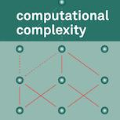Formal XAI (explainable AI) is a growing area that focuses on computing explanations with mathematical guarantees for the decisions made by ML models. Inside formal XAI, one of the most studied cases is that of explaining the choices taken by decision trees, as they are traditionally deemed as one of the most interpretable classes of models. Recent work has focused on studying the computation of "sufficient reasons", a kind of explanation in which given a decision tree $T$ and an instance $x$, one explains the decision $T(x)$ by providing a subset $y$ of the features of $x$ such that for any other instance $z$ compatible with $y$, it holds that $T(z) = T(x)$, intuitively meaning that the features in $y$ are already enough to fully justify the classification of $x$ by $T$. It has been argued, however, that sufficient reasons constitute a restrictive notion of explanation, and thus the community has started to study their probabilistic counterpart, in which one requires that the probability of $T(z) = T(x)$ must be at least some value $\delta \in (0, 1]$, where $z$ is a random instance that is compatible with $y$. Our paper settles the computational complexity of $\delta$-sufficient-reasons over decision trees, showing that both (1) finding $\delta$-sufficient-reasons that are minimal in size, and (2) finding $\delta$-sufficient-reasons that are minimal inclusion-wise, do not admit polynomial-time algorithms (unless P=NP). This is in stark contrast with the deterministic case ($\delta = 1$) where inclusion-wise minimal sufficient-reasons are easy to compute. By doing this, we answer two open problems originally raised by Izza et al. On the positive side, we identify structural restrictions of decision trees that make the problem tractable, and show how SAT solvers might be able to tackle these problems in practical settings.
翻译:正式 XAI (可解释的 AI) 是一个日益增长的领域, 重点是计算解释, 为 ML 模型做出的决定提供数学保障。 在正式 XAI 中, 研究最多的一个案例是解释决策树的选择, 因为它们传统上被视为最可解释的模型类别之一。 最近的工作侧重于研究“ 充分的理由” 的计算方法, 这是一种解释, 给决策树 $T 和 例 $x 的计算方法, 一个解释 $T (x) 的决定, 一个解释 $T (x) 的子集, 其特性为 $x, 例如, 美元与 美元兼容, 美元= T (x) 中, 它认为, 美元(z) = (xxx) 美元 的计算方法, 美元的特性已经足够证明美元的分类。 然而, 充分的理由构成一个限制性的解释概念, 因此, 社区开始研究其不确定性的对应机制, 其中要求 将 美元(z) 美元 美元 的概率 和 美元 美元 美元 美元 的计算为 美元 。



